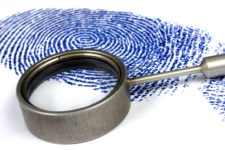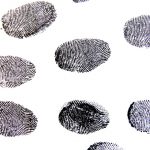Fingerprint Evidence Is Not Infallible

We previously reported on the problems with fingerprint evidence, including the lack of uniformity in matching techniques and the fact that a human’s interpretation is what ultimately determines whether there is a match.
Since our article, additional research has been undertaken which further calls into question the reliability of latent fingerprint analysis.
New Research
The 160 page report by the American Association for the Advancement of Science (AAAS) has concluded that any claim that a fingerprint collected from a crime scene belongs to a matching print from a person are “indefensible” and “without scientific basis”.
Professor of Statistics and Social Sciences, Joseph Kadane, conducted a meta-study which reviewed a number of research, finding that the assumption that matching prints must be derived from the same person is an unproven assumption.
“Our review of the scientific literature found that there is no scientific way to estimate the number of people in some community — a city, a state, the country, the world — who share the characteristics found, and hence no scientific basis for identification”.
“This makes it scientifically baseless to claim that an analysis has enabled examiners to narrow the pool of sources to a single person.”
Like previous researchers, he also noted that different analysts use different methods to test fingerprints – so whereas one analyst may use seven points of match, another may use eleven, and that the areas of the print looked at can change from examination to examination, enabling analysts to “look for” a match, or conversely to seek points of difference.
Errors in matching
A separate Australian study has reached a similar conclusion, finding that experts correctly matched a fingerprint taken from an alleged crime scene with the person ultimately found responsible for the crime in just 92 percent of cases, not 100% as presented in crime documentaries and movies.
The researchers explained that latent fingerprints taken from crime scenes can vary vastly in terms of their clarity and completeness, often making comparisons to those taken from suspects difficult or even impossible.
White lab coat effect
The AAAS report expressed concern that “Members of the public are likely to hold misconceptions about latent print examination that have been shaped by decades of overstatement by latent print examiners.”
The concern is consistent with literature regarding the ‘white lab coat effect’, which is where members of the public place excessive emphasis on evidence presented by those who present themselves as experts.
The Courts in Australia have, however, moved to exclude expert evidence which may unduly saw jurors.
In the case of Honneysett v the Queen, a Professor Henneberg identified the accused based on CCTV footage, even though the person filmed was wearing heavy clothing and had their face covered. That evidence was admitted during the trial, and the defendant was convicted.
On appeal to the High Court of Australia, their Honours French CJ, Kiefel, Bell, Gageler, Keane JJ found that the professor’s evidence gave an “unwarranted appearance of science” which was not on his specialist knowledge or on any established field of scientific analysis, but was simply a lay opinion based on visual comparison.
The evidence was ruled admissible on that basis.
Recommendations
The AAAS report recommended that experts be required to acknowledge the limitations of their evidence in reports and during testimony.
It suggested that words such as ‘match’, ‘identification’ and individualization’ should never be used in the context of fingerprint evidence. Rather, points of similarity and difference should be shown and explained, leaving the ultimately conclusion to the decision makers.
The report calls for those in the criminal justice system, including police, lawyers and judges, to better educate themselves with the nature and limitations of fingerprint evidence, with a view to furthering the interests of justice.







